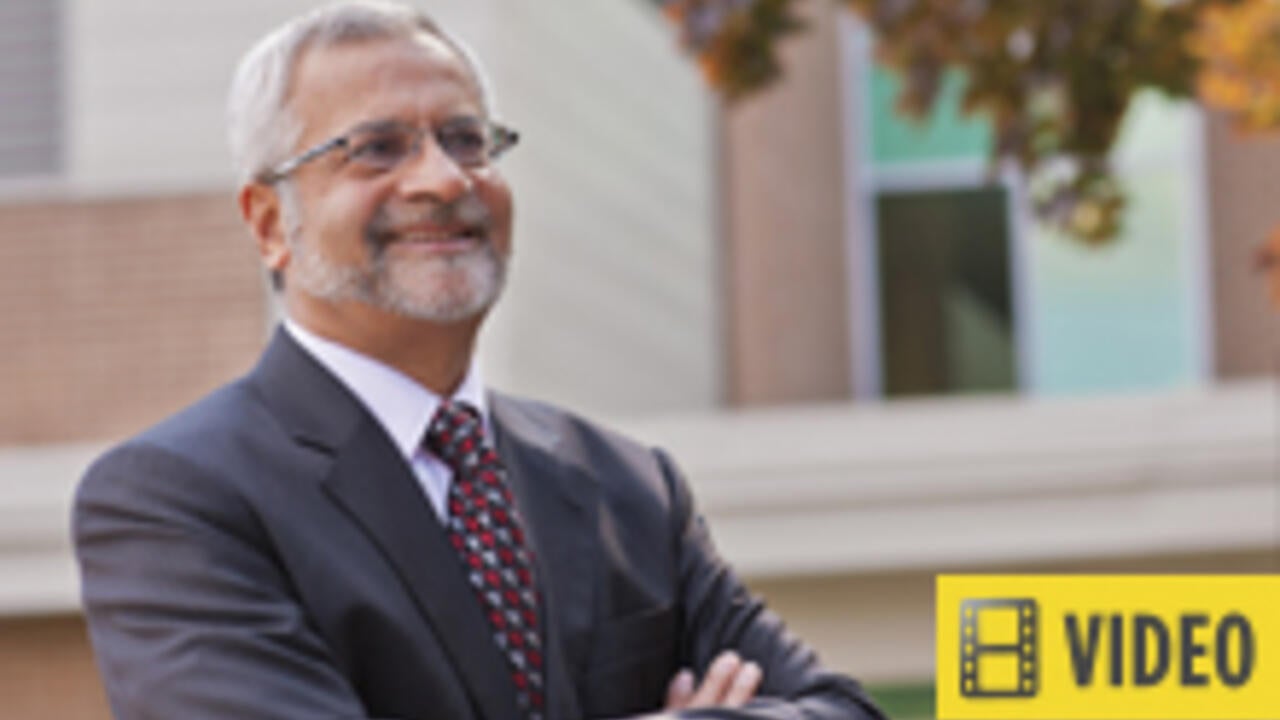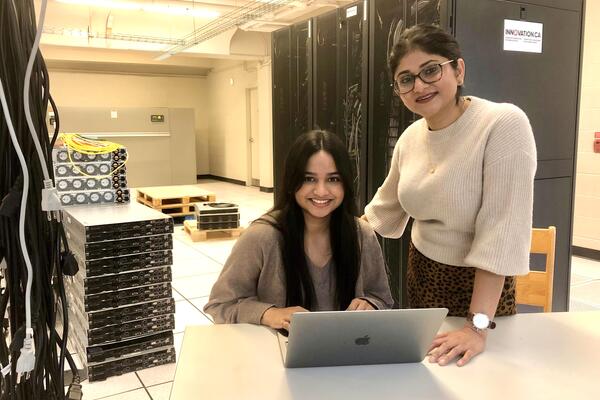
How does a soldier power his cell phone?
Climate change: Waterloo researcher works with NATO to find green energy solutions for remote military bases

Climate change: Waterloo researcher works with NATO to find green energy solutions for remote military bases
By Staff Marketing and Strategic CommunicationsSmart micro grids are the responsible way to power remote military bases in an age of climate change, says a Waterloo researcher.
Jatin Nathwani, a professor in Waterloo’s Department of Civil and Environmental Engineering, says smart micro grids - small, portable energy systems powered by renewable energy sources like wind and solar - can function off grid in some of the world’s most remote military bases.
The emerging technology can also be adapted for the world’s two billion “energy poor” who have no access to electricity. The lives of people in refugee camps, for example, could be vastly improved with micro grids, says Nathwani, who is also the Ontario Research Chair in. Public Policy for Sustainable Energy.
“Developing micro-power solutions will provide a reasonable level of high-quality energy to those who need it most. It will become a stepping stone to breaking the back of the whole issue of energy poverty,” he says.
NATO needs reliable, clean energy to support missions
Nathwani is the lead author in a chapter of book called Sustainable Cities and Military Installations. The book, published recently, was the result of a NATO workshop attended by 50 scientists, engineers and policy makers in 2012. They were called together to discuss how greener energy technologies can support military bases and other remote communities around the world in an age of climate change.
Micro-grids need to be simple to transport, set up and maintain, says Nathwani. “They must be idiot proof. They can’t require a high level of intervention to make them work properly.”
How heavy is a battery in a backpack?
The military wants mobile, flexible energy systems. Bases that depend on expensive fossil fuels, shipped across long distances to remote locations, can easily fail, putting the mission and soldiers at risk, says Nathwani.
A soldier who leaves his base on a mission that may last several days in a remote area needs an energy source to power his cell phone, for example. A flexible solar cell on his backpack is a better solution than batteries that make up 50 per cent of the weight of a backpack.
How much is NATO investing in green technology?
He hopes smart micro-grid solutions developed with the support of NATO will be used for other remote communities around the world including First Nations’ communities in Canada.
Developing smart micro grids that are reliable and adaptable to the unique needs of the military and world’s energy poor is a complex issue, says Nathwani.
“NATO has invested $1 billion into this,” says Nathwani. “The development of this technology is an expensive proposition and we’re starting to see how solving the problem of reliable clean energy for the military can also improve the lives of the world’s energy poor.”
There is a powerful convergence of needs - military, remote communities, refugee camps and the mining sector - that point to micro-power solutions, says Nathwani. Micro smart grids will give society low-cost energy solutions that are better for the environment.

Waterloo researcher Dr. Tizazu Mekonnen stands next to a rheometer, which is used to test the flow properties of hydrogels. (University of Waterloo)
Read more
Plant-based material developed by Waterloo researchers absorbs like commercial plastics used in products like disposable diapers - but breaks down in months, not centuries

Read more
Here are the people and events behind some of this year’s most compelling Waterloo stories

Engineering master's student Nayeema Nonta (left), one of the three paper authors, and her supervisor, Dr. Sirisha Rambhatla, in a large server room with the computer power needed to develop their new LLM training technique. (University of Waterloo)
Read more
Waterloo researchers develop highly efficient AI training system that paves the way for cheaper, greener “intelligent partners”
The University of Waterloo acknowledges that much of our work takes place on the traditional territory of the Neutral, Anishinaabeg, and Haudenosaunee peoples. Our main campus is situated on the Haldimand Tract, the land granted to the Six Nations that includes six miles on each side of the Grand River. Our active work toward reconciliation takes place across our campuses through research, learning, teaching, and community building, and is co-ordinated within the Office of Indigenous Relations.